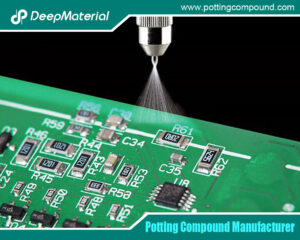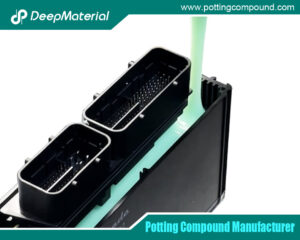
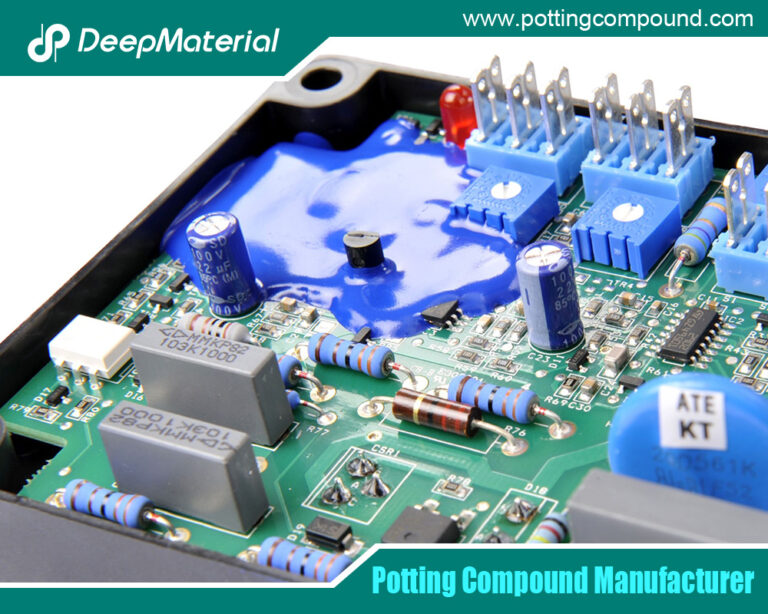
Polyurethane Potting Compound for Electronics: A Comprehensive Overview
- Electronic Potting Material Manufacturer
- November 1, 2024
- conformal coating for electronics, conformal coating for pcb, conformal coating for pcb standards, conformal coating material, conformal coating pcb, conformal coating process, conformal coating silicone, conformal coating spray, conformal coating types, conformal coating waterproof, Connector Potting Compound, electrical potting compound, electronic potting compound, epoxy potting compound, Flexible Potting Compound, LED Potting Compound, polyurethane potting compound, polyurethane potting compound for electronics, potting compound for electronics, potting compound for pcb, potting compound vs epoxy, silicone potting compound for electronics, thermal potting compound, UV Cure Potting Compound, UV curing potting compound, waterproof potting compound
Polyurethane Potting Compound for Electronics: A Comprehensive Overview
In electronics, protecting sensitive components from environmental hazards is crucial for ensuring durability and reliability. Potting compounds is one of the most effective methods for achieving this protection. Polyurethane potting compounds have gained significant popularity among various available materials due to their outstanding properties and versatility. These compounds provide excellent insulation, mechanical strength, and resistance to moisture, chemicals, and temperature variations, making them an ideal choice for various electronic applications.
What is Polyurethane Potting Compound?
Polyurethane potting compounds are synthetic resins that encapsulate and protect electronic components and assemblies. They are formed by the reaction between polyols and isocyanates, resulting in a flexible, durable material that can withstand harsh environmental conditions. Polyurethane’s versatility allows for the formulation of compounds with varying hardness, flexibility, and thermal properties, making them suitable for numerous applications.
Critical Properties of Polyurethane Potting Compounds
Polyurethane potting compounds possess several fundamental properties that make them particularly advantageous for electronics applications:
- Excellent Electrical Insulation:Polyurethane compounds provide superior electrical insulation, preventing short circuits and protecting sensitive components from electrical interference.
- Moisture Resistance:These compounds offer excellent moisture resistance, which helps safeguard electronic components from corrosion and failure due to water exposure.
- Mechanical Strength:Polyurethane potting compounds have high tensile strength, making them resistant to mechanical stress, vibrations, and impacts. Using high-quality potting compounds ensures the long-term protection of encapsulated components.
- Temperature Stability:They can operate effectively across a wide temperature range, maintaining their physical and electrical properties even under extreme thermal conditions.
- Chemical Resistance:Polyurethane potting compounds resist various chemicals, including oils, solvents, and acids, enhancing their durability in challenging environments.
- Flexibility:Polyurethane’s flexible nature allows it to absorb shocks and vibrations, protecting delicate components from mechanical damage.
Benefits of Using Polyurethane Potting Compounds in Electronics
Polyurethane potting compounds offer many advantages, making them essential for protecting electronic components. Their unique properties cater to various industry needs, ensuring durability and reliability in demanding environments. Here are some key benefits:
Enhanced Durability
- Protection from Environmental Stress: Polyurethane compounds shield sensitive electronics from moisture, dust, and corrosive elements, significantly extending their lifespan.
- Impact Resistance:They absorb mechanical shocks and vibrations, preventing damage to delicate components.
Improved Performance
- Thermal Stability:Polyurethane potting compounds can maintain performance across a wide temperature range, reducing the risk of overheating.
- Electrical Insulation:They provide excellent dielectric properties, preventing short circuits and ensuring the safe operation of electronic devices.
Cost-Effectiveness
- Reduced Maintenance Costs:Polyurethane potting compounds lower the frequency of repairs and replacements by minimizing the risk of component failures.
- Extended Product Lifespan:Enhanced durability translates to a longer lifespan for electronic devices, resulting in lower overall ownership costs.
Design Flexibility
- Customization Options:Polyurethane potting compounds can be formulated to meet specific mechanical and thermal requirements, allowing for tailored solutions in various applications.
- Support for Miniaturization:Their compact form factor enables the design of more minor, more efficient electronic devices without compromising protection.
Easy Application
- Versatile Application Methods:Many polyurethane compounds can be easily mixed and applied using techniques such as pouring, dispensing, or injection, streamlining the manufacturing process.
- Quick Curing Options:Rapid curing formulations allow faster production cycles, reducing downtime and increasing efficiency.
Applications of Polyurethane Potting Compounds in Electronics
Polyurethane potting compounds are used in various electronic applications due to their protective and insulating properties. Key applications include:
Consumer Electronics
- Smartphones and Tablets:Potting compounds protect circuit boards and components from moisture, dust, and impact.
- Home Appliances:These are used in electronic controls and sensors to ensure durability and reliable operation.
Automotive Electronics
- ECUs (Engine Control Units): Protect sensitive components from vibrations, moisture, and extreme temperatures.
- Lighting Systems: Ensures the longevity of LED drivers and other electronic systems in harsh environments.
Industrial Equipment
- Motor Drives and Control Systems:Potting compounds safeguard power electronics from environmental factors and enhance reliability.
- Automation Equipment: Used in sensors and controllers to prevent damage from dust, moisture, and mechanical stress.
Renewable Energy Systems
- Solar Inverters:Protects electronics from moisture and environmental exposure in outdoor applications.
- Wind Turbine Electronics:Ensures reliable operation of power electronics in harsh weather conditions.
Medical Devices
- Diagnostic Equipment:Potting compounds protect sensitive electronics from moisture and contamination, ensuring accuracy and reliability.
- Wearable Devices:Protects against sweat, moisture, and environmental exposure.
Challenges in Using Polyurethane Potting Compounds
While polyurethane potting compounds offer numerous advantages, there are also challenges to consider:
- Curing Time:Some polyurethane potting compounds may require longer curing times, affecting production schedules. Manufacturers must balance the need for quick processing with the required properties of the cured material.
- Thermal Expansion:Polyurethane compounds may experience thermal expansion, which could stress sensitive components if not carefully managed during the design and application.
- Environmental Concerns: The production and disposal of polyurethane materials can raise ecological issues. Manufacturers are increasingly seeking eco-friendly alternatives and sustainable practices in potting compound production.
- Limited High-Temperature Performance:While polyurethane compounds perform well at moderate temperatures, they may not suit applications requiring extremely high thermal stability.
Future Trends in Polyurethane Potting Compounds
The polyurethane potting compound market is expected to evolve in the coming years due to various trends:
Sustainability Initiatives
As environmental concerns grow, manufacturers are focusing on developing eco-friendly potting compounds. Biodegradable or bio-based polyurethanes are becoming more prominent in the market.
Advanced Formulations
nnovations in polymer chemistry are leading to advanced polyurethane formulations that offer enhanced properties, such as improved thermal stability and electrical performance.
Integration with Smart Technologies
The increasing demand for smart electronics and IoT devices drives the need for innovative potting solutions that can accommodate advanced functionalities while ensuring protection.
Customization and Tailored Solutions
Manufacturers are increasingly offering customized potting compounds to meet the specific needs of various industries, enhancing their competitive edge and customer satisfaction.
Conclusion
Polyurethane potting compounds protect electronic components from environmental hazards, ensuring their reliability and durability across various applications. With properties such as excellent electrical insulation, moisture resistance, and mechanical strength, polyurethane has become a preferred choice in the electronics industry.
As the demand for compact, high-performance electronic devices continues to grow, the use of polyurethane potting compounds is expected to expand. By overcoming challenges and embracing sustainability initiatives, the future of polyurethane potting compounds looks promising, providing innovative solutions to meet the evolving needs of the electronics market.
For more about choosing the Top Polyurethane Potting Compound for Electronics: A Comprehensive Overview, you can pay a visit to DeepMaterial at https://www.pottingcompound.com/ for more info.
Recent Posts
- What Are the Core Differences Between Different Conformal Coating Types?
- The Benefits of Conformal Coating for Electronics Products
- Conformal Coating Spray
- UV Curing Potting Compound
- The Ultimate Guide to Electrical Potting Compound and Market Application
- The Top Polyurethane Potting Compound
- Advanced Epoxy Potting Compound for Superior Electronic Protection
- Waterproof Potting Compound: A Comprehensive Guide
- Silicone Potting Compound for Electronics
- Potting Compound vs. Epoxy: A Comprehensive Comparison
Tags
Related Posts

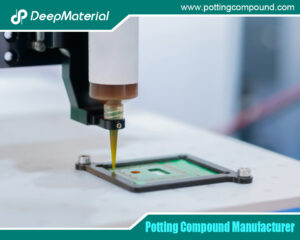
The Benefits of Conformal Coating for Electronics Products
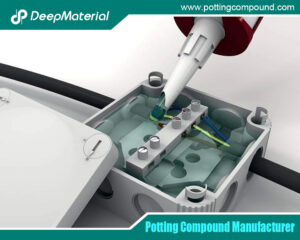
Conformal Coating Spray
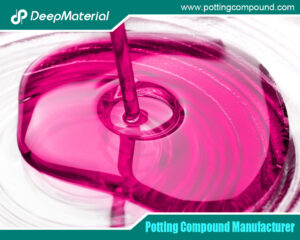
UV Curing Potting Compound
